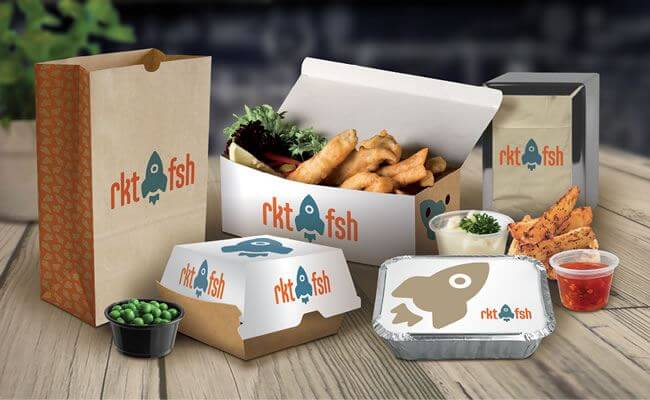In the world of food packaging, ensuring safety and quality is paramount. One of the key components to achieving this is the use of inks for metal food packaging. These inks are not just about aesthetics; they play a crucial role in maintaining the integrity and safety of the packaging. This article delves into the importance of choosing the right inks and how they impact both the packaging and the food inside.

The Importance of Inks in Metal Food Packaging
Metal packaging, such as cans and containers, is widely used in the food industry due to its durability and ability to preserve food for extended periods. The inks used on these metal surfaces must adhere well, withstand various environmental conditions, and most importantly, ensure that there is no contamination of the food product. Choosing the right ink is crucial in preventing migration, which could potentially harm consumers.
Types of Inks Used
There are several types of inks specifically formulated for metal food packaging. The most common ones include solvent-based inks, water-based inks, and UV-cured inks. Each type has its advantages and is chosen based on the specific requirements of the packaging process. Solvent-based inks are known for their excellent adhesion properties, while water-based inks are preferred for their environmental benefits. UV-cured inks, on the other hand, offer rapid drying times, making them ideal for high-speed production lines.
Safety and Compliance
Safety is a top priority when it comes to inks for metal food packaging. Manufacturers must ensure that the inks comply with regulatory standards to avoid any risks of contamination. Organizations such as the FDA and EFSA have set guidelines on the use of inks in food packaging to ensure consumer safety. Learn more about food-safe inks here.
Environmental Considerations
In recent years, there has been a growing emphasis on sustainability in packaging. This is no different when it comes to the inks used in metal food packaging. Manufacturers are increasingly opting for inks that have a lower environmental impact. Water-based inks, for instance, are gaining popularity due to their reduced volatile organic compound (VOC) emissions. Additionally, innovations in ink technology are leading to the development of biodegradable inks, further contributing to eco-friendly packaging solutions.
Challenges in Ink Formulation
Formulating inks for metal food packaging is not without its challenges. The ink must not only adhere well to metal surfaces but also resist factors such as heat, light, and chemicals. Moreover, the ink formulation must ensure that there is no reaction with the metal or the food product. This requires a delicate balance of chemistry and engineering to produce inks that meet all these criteria.
Advancements in Ink Technology
Thanks to advancements in technology, the future of inks for metal food packaging looks promising. New formulations are being developed that offer better adhesion, faster drying times, and improved resistance to external factors. These advancements are paving the way for more efficient and safer packaging solutions. For instance, innovations in ink performance on paper packaging can provide insights into potential improvements for metal packaging as well. Check out the details on ink performance on paper packaging.
Cost Implications
The cost of inks for metal food packaging is another factor that manufacturers need to consider. While higher-quality inks may come at a premium, they often offer better performance and longevity, ultimately leading to cost savings in the long run. Investing in high-quality inks can also reduce the risk of recalls due to packaging failures, protecting both the brand’s reputation and consumer safety.
Choosing the Right Ink Supplier
Choosing the right supplier for inks for metal food packaging is crucial. A reliable supplier will not only provide high-quality inks but also offer technical support and guidance on compliance with safety and environmental standards. Partnering with a supplier that understands the unique challenges of metal food packaging can make a significant difference in the success of the packaging process.
Case Studies and Industry Examples
Several companies have successfully implemented innovative ink solutions for their metal food packaging. For example, a leading beverage company transitioned to solvent-free packaging inks, resulting in reduced VOC emissions and improved sustainability. Read more about solvent-free packaging inks and their benefits.
Future Trends in Metal Food Packaging Inks
Looking ahead, the future of inks for metal food packaging is likely to be shaped by trends such as increased demand for eco-friendly packaging and advancements in smart packaging technologies. These trends will drive further innovation in ink formulations, leading to even more sustainable and efficient packaging solutions.

FAQs
What are the main types of inks used in metal food packaging?
The main types of inks used in metal food packaging include solvent-based inks, water-based inks, and UV-cured inks. Each type has its specific advantages and applications.
How do inks impact the safety of food packaging?
Inks play a crucial role in ensuring the safety of food packaging by preventing contamination and adhering to regulatory standards. It’s important to choose inks that are compliant with safety guidelines to avoid any risks to consumers.
What are the environmental considerations for inks in metal food packaging?
Environmental considerations include selecting inks with lower VOC emissions, such as water-based inks, and exploring biodegradable options. These choices help reduce the environmental impact of packaging.
In conclusion, the world of inks for metal food packaging is continually evolving, with a strong focus on safety, compliance, and sustainability. By understanding the importance of choosing the right inks and staying informed about advancements in the industry, manufacturers can ensure that their packaging meets both regulatory standards and consumer expectations. For more insights, visit this article on inks for food packaging.
This article contains affiliate links. We may earn a commission at no extra cost to you.






